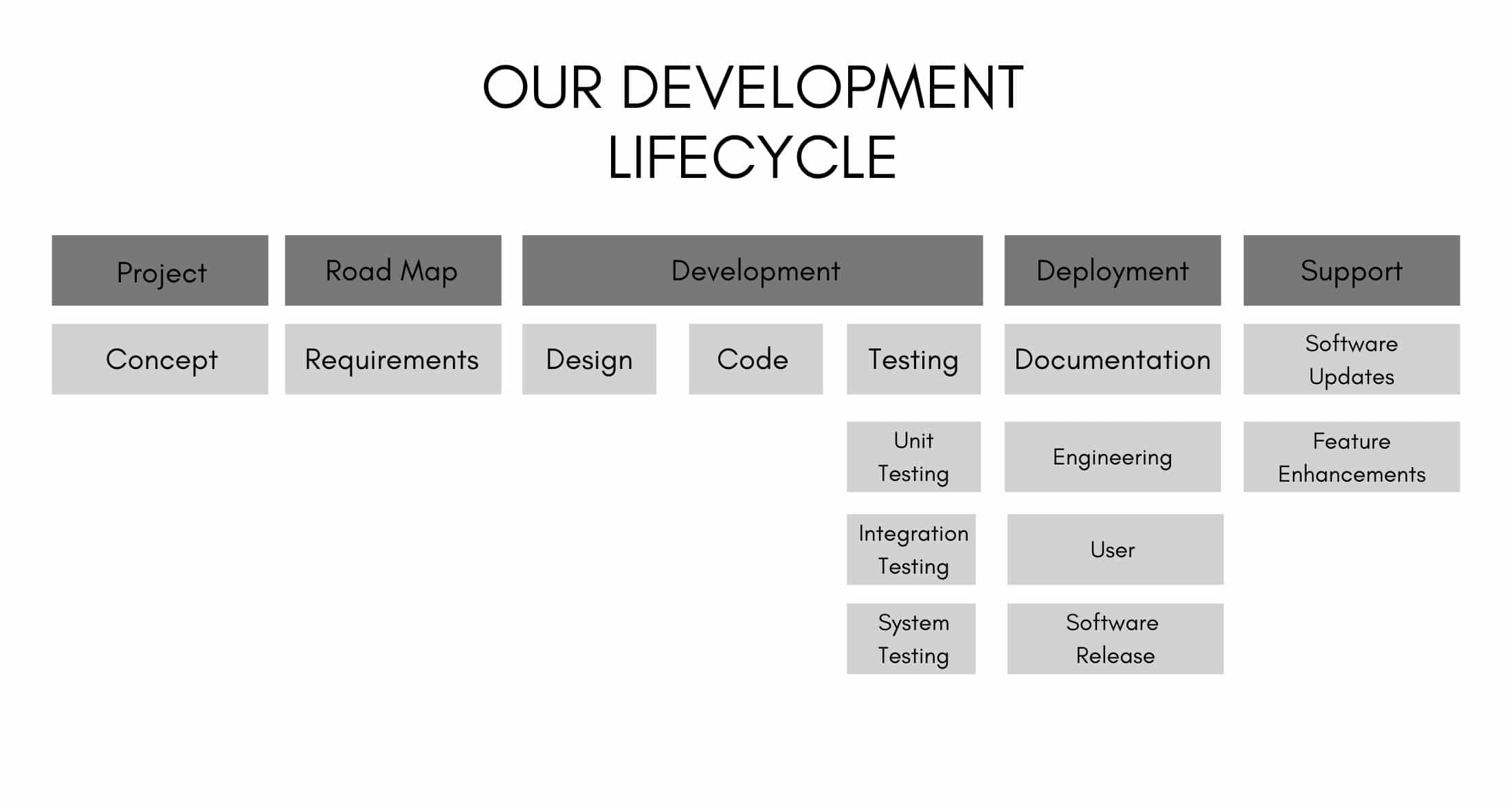
Embedded software is a very specialized area of software development that requires a lot of knowledge around the low-level interaction between hardware and software. All the while, working within a device with limited resource restrictions to produce high reliability and performance software.
If you’re searching high and low for the appropriate vendor to build your embedded software, look no further. We’re better than the other guys. Don’t believe us? We’ll give you 5 reasons why.
5 Reasons Why Our Embedded Software Development Process is Better
1. We’re not contractors, we’re your partner.
Most embedded software developers work as contractors to enterprises to quickly develop embedded software, but we are not a contractor; we are your development partner. We work hand-in-hand with customers like you to ensure the finished product meets your requirements and quality standards. Plus, unlike the other guys, we’re not just one individual, we’re a team, and that means your software is being looked over by several specialists.
2. Everything we do is meticulous.
We take our processes very seriously and follow a meticulous lifecycle to ensure every embedded software project is at the utmost standard of quality and compliance. Below is a peek into our embedded software development lifecycle.

Seems like a lot, huh? We break it down in our next reason.
3. We follow a step-by-step process that keeps customers like you in the loop to fully understand what’s going on with your software.
We believe it’s important to have your involvement from the beginning, when we first learn what you’re looking for, to the end, when you have your software working in place. Let’s break down our process for you step-by-step.
Step 1. We determine your software requirements.
For the first step of any embedded software development project, we obtain and analyze your requirements, whether you provide them directly to us or if you need assistance in developing them — and we’ll make sure they are crystal clear.
The finalized requirements include items such as:
- System requirements and restrictions
- Functional requirements
- Communications requirements
- User interface requirements
Step 2. We put together a development project proposal.
Based on the approved requirements specification, we then propose a development project that meets your requirements and schedule.
Step 3. We enter the design stage.
Once the proposed project is approved, the first deliverable will be a design specification for the software. The requirements specification defines “what” is going to be done; the design specification defines “how” it is going to be done.
The requirements specification is used to ensure that the design specs capture all stated requirements and documents how each will be fulfilled. Documenting is an extremely important part of the design sate.
During this phase, any issues or holes in the requirements will be determined and resolved.
The final design specification contains the detailed design for the software as well as the specification of any third party or open–source elements that will be included to achieve the stated requirements.
Step 4. Development stage.
During development, the design specification is used as a guide to ensure all required functionality is implemented.
Unit testing is done during the development phase to ensure each code module provides the necessary functionality.
Step 5. Test specification development.
A test specification is developed to define test cases ensuring all functionality specified in the design specs has been implemented and meets the stated requirements.
Step 6. We perform integration testing.
During this phase, the completed software is integrated with the final system hardware and the test cases in the test specification are executed.
Testing is an iterative process where test cases are run, issues that are found (in either the software or the test specification) are fixed, then test cases are re-run. Once all test cases have been executed successfully, integration testing is completed, and the final report is provided to you.
Step 7. We do protocol conformance pre-testing.
If the project includes any protocol standards conformance requirements, such as ODVA (EtherNet/IP, DeviceNet) or PI (PROFIBUS or PROFINET), conformance pre-testing will be included in the test specification.
Step 8. Your software enters the delivery and acceptance stage.
During this phase, we provide the developed code, final design specification and executed test plan to you and then a joint review is completed. An acceptance test is performed by or for you, which may be a subset of the test specification or your pre-determined set of tests. If any issues arise, they will be resolved during this phase.
Step 9. Support
We provide support during system testing after receiving acceptance of the project.
System testing support is considered a part–time, as-needed activity, provided across a span of 30 to 90 days, where we provide assistance, as necessary, and include minor updates to the software, if needed.
During this time span, we ask that you confirm the delivered software is fully functional in your system’s environment.
4. We only use industry standards.
Our embedded software services and solutions span across multiple industries and products, from industrial automation control and information to vehicle electronic systems and energy monitoring and exploration systems.
Our embedded software development experience ranges from simple single board devices to complex, network connected, and real–time systems.
Our custom software development services include:
- Cross-Platform Software Development
- PC / Windows .NET Application and Component Development
- Web / Browser Based Applications and Widget Development
- Embedded Software Development
Cross-Platform environments we work with:
- Embedded Real–Time Devices
- PC and Hand-Held Devices
- Small to Mid-Range Computer Systems
The languages we speak:
We specialize in C, C++, C#, Java and VB/VB.NET programming languages
Tools we work with:
We have an array of tools that we are familiar with including:
- Integrated Development Environments (IDEs)
- Cross Compilers
- Conformance and Interoperability test tools
- Debuggers
- In–Circuit Emulators (ICEs)
- Debug Probes
- Device and System Simulators
- Security and Exploit Test Tools
5. We cater to your needs.
In the age of COVID-19 and limited budgets, we understand that times are tough, which is why we cater to your needs. We work with you to find a solution that works. Partner with us to leverage our expertise as an extension of your engineering team to develop quality embedded software to meet your tight deadlines. Want to learn more? Talk with an expert today who will assess your requirements and needs.
